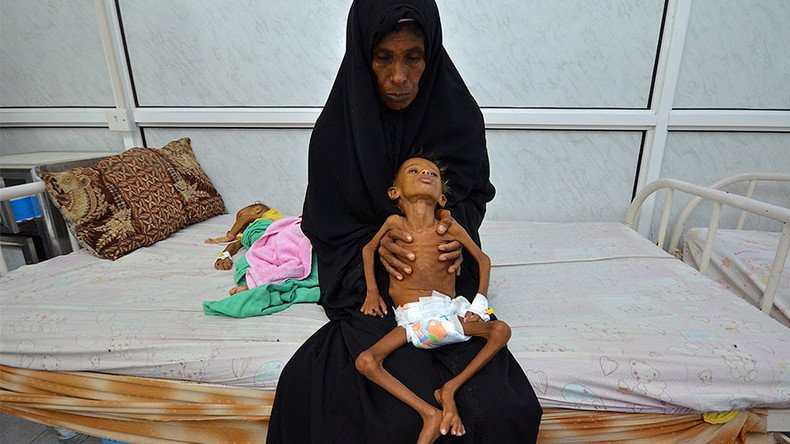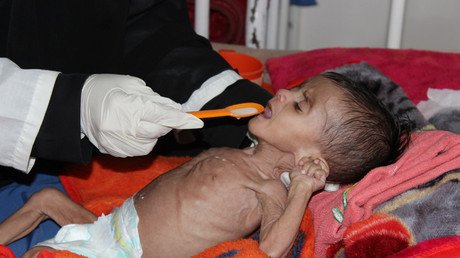Child malnutrition at ‘all-time high’ in Yemen, UNICEF claims in alarming report

Nearly 2.2 million Yemeni children are in need of urgent aid, as malnutrition is at an “all-time high,” a UNICEF report claims. The figures represent a 200 percent increase from 2014, with severe acute malnutrition affecting 462,000 children.
Physically severe acute malnutrition (SAM) is manifested in grotesquely slim bodies and stunted growth, as is the case in Sa’ada governorate in the northwest, which has the world’s highest stunting rates, according to Monday’s document – eight out of 10 children.
It is joined by four other governorates, all experiencing alarming rates of SAM.
Another 1.7 million children suffer from moderate acute malnutrition.
The report estimates that one child dies every 10 minutes from preventable diseases ranging from diarrhea to respiratory tract infections, as well as malnutrition itself.
“Malnutrition in Yemen is at an all-time high and increasing,” UNICEF Acting Representative in Yemen, Dr. Meritxell Relano, said. “The state of health of children in the Middle East’s poorest country has never been as catastrophic as it is today.”
“Violence and conflict have reversed significant gains made in the last decade in the health and nutrition of Yemeni children. Diseases such as cholera and measles have spread and, with few health facilities functional, such outbreaks are taking a heavy toll on children.”
Relano was referring to the progress achieved under UNICEF in 2016, when around four million children under five and suffering from SAM were supplemented with life-saving vitamins and food. Funding for the projects has, however, been scant.
Her words come on the heels of an Oxfam report, warning that Yemenis are at risk of running out of food by April – which will mark two years since the start of the current conflict in what is considered to be the poorest country in the Middle East.
On the same day, HRW released a report suggesting the United States may be complicit in the suffering, with numerous other UN reports documenting the worsening situation.
Saudi Arabia began bombing the country in support of exiled president Abdrabbuh Mansour Hadi at the end of March 2015, after Houthi rebels loyal to former president Ali Abdullah Saleh, backed by Iran, took over the capital of Sanaa.
“We call on parties to the conflict to give us unhindered access to children in need across the country so we are able to deliver nutrition supplies, treat malnourished children and support Yemen’s health services,” Relano adds, as UNICEF continues to make impassioned pleas for additional funding – $70 million for 2017 on care for mothers and children.
Accessibility remains problematic, as NGOs and aid agencies cannot reach people trapped in high-risk zones.













